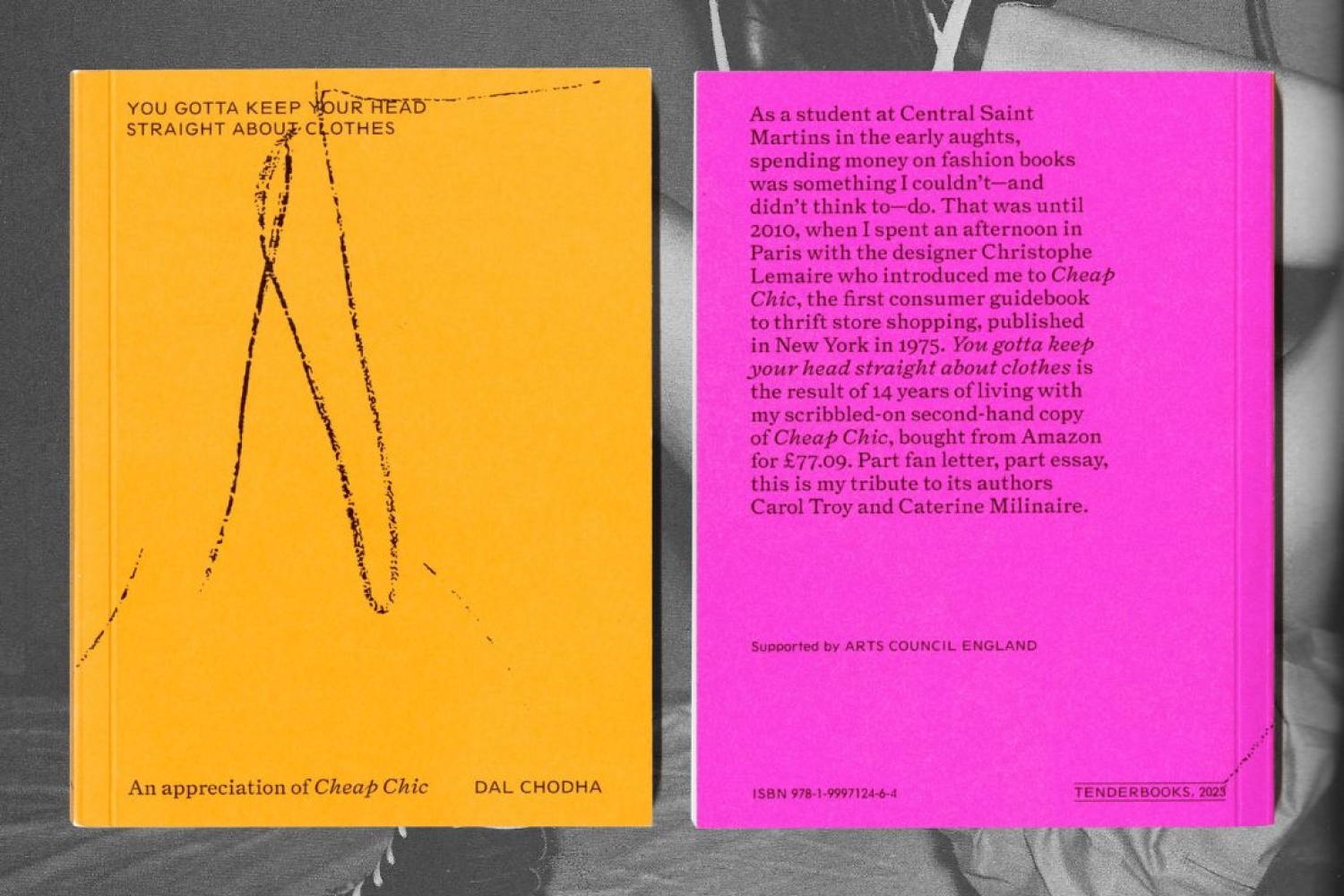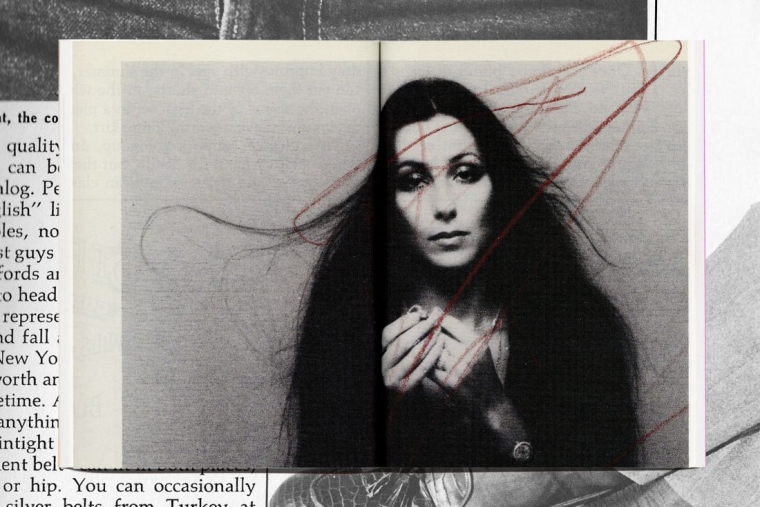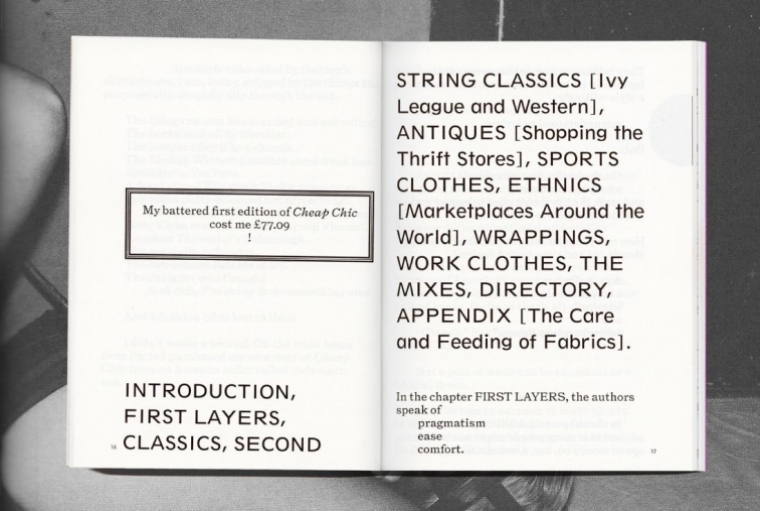

Writer and fashion educator, Dal Chodha’s latest publication You gotta keep your head straight about clothes is an homage to Cheap Chic, which is a guide to thrift store shopping, published in New York in 1975. Advocating for a sustainable fashion lifestyle, the book paves a way for finding your own fashion aesthetic.
On a gorgeous sunny afternoon in London over a cup of flat white and sesame bread, we spoke all things fashion.
What’s your relationship with fashion?
I have not chosen this career. It just happened. Watching Madhuri Dixit in Dil To Pagal Hai maybe was a formative moment. It’s such a naff thing to talk about Bollywood films. I know, those of you who grew up in India are not so crazy about it but for us, it was such a portal. Especially, those Yash Chopra and Sanjay Leela Bhansali films. They’ve got that melodrama. Also, MF Husain’s films, I need to rewatch that film he made with Madhuri. He made her look like the Mona Lisa in this obsessive way and it becomes very camp. It amazed me at the time.
I became interested in it for no particular reason, no one in my family, pays much attention to fashion. I have no idea where it came from. I have very strong mem- ories of watching my mum get dressed for events and par- ties and she would like to iron her suits and leave them while she’s doing her makeup. My mum used to make clothes but I think we all grew up with someone with a sewing machine. She wasn’t good at it and didn’t enjoy it. It wasn’t a romantic vision of watching mum at a sewing machine. So, I honestly have no idea.
How did academia make its way to fashion?
I studied Fashion Communication at Central Saint Martin’s. At the time, the course was really small, it wasn’t very defined in the sense that the curriculum was really loose. We just hung out in this building for three and a half years. But anyway, the result of it was that you ended up making a magazine.
2004 was a really high point for independent magazines in the UK. Every week, there was a new one coming out and there was enough room for them all. It didn’t feel like an insane thing to make a magazine. I remember one of my tutors saying, “oh, you should make a magazine about being Indian.” I found that really weird. I then used that weirdness to make this magazine called Root and I basically just profiled as many British Asians as I could find. So, it was very specifically aligned with British Indians, as I called them, who worked in the creative industries. It was my mission to meet them. It had a small amount of success many found it new and fresh. I think growing up in the UK, particularly when I did in the late 90s and early 2000s in particular, there was so much British Asian excellence on television—Goodness Gracious Me and The Real McCoy. There were so many kinds of late-night TV shows, where you had just Asian cultural programs, talking about things happening across the UK. So, I never had anxieties about my culture.
I was very aware that I didn’t want to work full- time for anyone in any capacity because it just didn’t feel right to me. I didn’t really want to exist in a city like London and then have to use it up on the weekends like everybody else. Then, I started teaching in 2008. I came in on a project at a university just to give advice really on a magazine they were working on. Then, I’m still here working at a different level.
What kind of evolution in fashion have you seen over the years?
There are millions of different worlds now. I think that’s why the publishing industry, fashion brands, advertising—everything is unsettled because it’s not clear who we’re talking to. So, everyone has their own kind of relationship with fashion now. It’s incredibly personal. That didn’t used to be the case. Different markets have a very clear need for legacy titles to tell people basically how to spend their money. You have money, you don’t know what to buy, we’ll tell you what to buy.
But now it’s much more evolved. I think there is a problem that all of us are either ignoring, or think it’s impossible to address. Whatever we’re making or saying is going to be filtered and communicated to a million different people. And lots of people will wilfully misunderstand what we say when we talk about anything. I think that makes you very nervous to be in the position of an editor.
When it comes to fashion, there’s no truth. None of this needs to exist but it has to in order to make us feel something. In that sense, it has a huge value. I think everyone’s relationship to fashion changes all of the time. What I’ve noticed in the last kind of 20 or 17 years of teaching is that 18-20-year-olds are the same—the anxieties, the stresses, the excitement, and the energy of being that age have not changed. I think people now are too concerned with confirming who they are really early in their life and expecting validation for it. I think somehow we all together are responsible for them feeling that pressure as well as them doing it to themselves. The biggest change is that now people of all ages, especially young people, want to confirm their identity, beliefs, what they look like and their style in a way that’s unnatural. You’re actually going to change a million times. There’s just this really unhealthy rush, I think, for everybody to not want to change.

What drives fashion for the young generation then?
I think one of the biggest challenges, for young people when it comes to the decisions they’re making about fashion, is they feel like there’s so much pressure being placed on their clothes. They are so hyper-conscious that they want their clothes and the way that they appear to confirm their beliefs, but as we just mentioned, their beliefs are their beliefs right now, they might change. I think why there is such confusion around the way catwalk shows look, the way magazines look and what celebrities have chosen to be on the covers now, is because everyone’s tastes are developing at such a speed now, that it’s hard to kind of keep up. Everyone is shouting at everybody now, so I think through that, what happens is students or young people try to find their own identity first, in order to then attach their style and clothing choices to someone else. It’s a circular problem because you don’t know what your identity is yet, so you’re kind of chasing yourself. I met one of the students on campus and she had bleached her eyebrows and then I think it had something to do with Zendaya. As much as those students might profess to just fancy it, they don’t necessarily want to admit it’s because of this TV show.

Can you tell us a little about your latest publication, You gotta to keep your head straight about clothes.
Tenderbooks, a bookstore I work with approached me to write a book. Initially I was a bit hesitant as I didn’t know what this means for me, because my work has been, and is so much about not having a definition of what I do. The word ‘book’ is a terrifying one to me because I have very specific ideas about what a book should be. So after a few months, I decided to go ahead. I wanted to write about what I know and what I love. There’s a book, Cheap Chic, an extremely important book that I remembered buying a copy of and discovering through Christophe Lemaire in 2010 that covers a lot of my interests—the history of objects and the importance of reading, writing and photography. I thought to just go away and lock myself in a room for a week to write about this book. I knew that I didn’t want to write an essay, a formal book or poetry, I just wanted to write and I came up with around 15,000 words and then started giving it a shape over a couple of months. I still don’t really call it a book because it’s incredibly small like it’s a very neat tiny little pocket-book type of thing. It was an amazing exercise and really allowed me to put my own philosophies down on paper and also kind of provide some other touch points to things that I’ve read recently. The conversations I’ve had with a lot of people afterwards have been really fruitful because they’ve explained that it’s allowed them to think about their relationship with fashion. I think, particularly in this age, where we’re saying that all of the rules are gone what everybody still needs is a backbone. One needs a philosophy, some kind of direction otherwise you are just shaving your eyebrows one day and then you don’t find it interesting, and then you’re doing something else the next. That kind of confusion creates a lot of problems for the planet and doesn’t give you something to hold on.
Words Shruti Kapur Malhotra
Date 27.07.2024